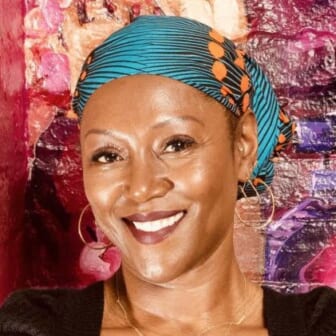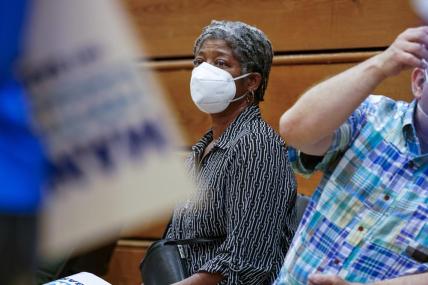Protecting girls and gender-expansive youths of color in a post-Roe world
OPINION: Young people of color who already experience disproportionately high levels of surveillance and monitoring by the criminal justice system face an even greater risk without equal access to safe and legal abortions.

Editor’s note: The following article is an op-ed, and the views expressed are the author’s own. Read more opinions on theGrio.
In the aftermath of the Supreme Court’s decision to strike down Roe v. Wade, state governments across the country have already instituted oppressive new restrictions and outright bans on abortion. One group is especially at risk from these draconian policies that are antithetical to our fundamental liberties: girls and gender-expansive youths of color who will be exposed to suffering as abortion services become illegal and harder to access.
We are all harmed by policies limiting abortion rights. These laws undermine our right to privacy and bodily autonomy while opening the door to higher levels of state surveillance, prosecution and criminalization, including for anyone who could conceivably be helping another person obtain an abortion. For girls and gender-expansive youth of color, the harms are even more profound. According to the Kaiser Family Foundation, 38 percent of legal abortions in the U.S. in 2019 were performed on Black women, compared with 33 percent on white women and 21 percent on Hispanic women. That same study found that 57 percent of abortions were performed on women between the ages of 20 and 29, and 9 percent were performed among young people under the age of 19.
Our country has a long and tortured history of criminalization and violence against women and girls of color, violence abetted by—and in many cases perpetuated by—the government. Government regulation of the bodies of girls and young women of color was central to the historical legacies of oppression associated with slavery and the colonization of the United States. Black women and girls’ bodies were once regarded as property, and the rape of Indigenous/Native women and girls was deemed a fundamental right and “privilege” of enslavers and settlers seeking to assert political and social control over entire communities. To subject young people of color to more state control and policy-induced pain is to turn back the clock to an era when their bodies were truly and certainly not their own.
Even today, we see how the legacy of state control and structural and interpersonal violence against young people of color in the United States continues to drive enduring inequities. Consider the pronounced disparities in infant and maternal mortality among Black and white Americans. And girls—and particularly girls of color—faced a disproportionate impact from the COVID-19 pandemic as they were burdened with added caregiving responsibilities at home and higher levels of learning loss, stress and trauma relative to boys.
Now, girls, young women and femmes of color will face the added burden of new laws depriving them of the right to safe and accessible abortion. Traveling to another state for an abortion is a considerable hurdle for many women and birthing parents—and an even bigger one for a young person. With laws requiring parental notification or restricting minors’ access to telehealth and medical abortion, the hurdles grow bigger still. Structural barriers also result in girls, young women and femmes of color having fewer resources and less medical coverage to find quality healthcare of any kind. The burden on emergency and urgent care are likely to skyrocket for younger birthing people of color if the only perceived option is one of desperation.
For young people who are left without access to safe abortion, there is also a greater risk of participating in underground economies that will further fuel their criminalization. Young people who already experience disproportionately high levels of surveillance and monitoring from the criminal and juvenile court systems, and young people in contact with the juvenile court and child welfare system, will inevitably experience an increased risk of forced pregnancy and/or criminalization from a ban on abortion. Tropes about Black motherhood rooted in misogynoir will continue to be leveraged as an excuse to remove children from the home so they can be placed in foster care. Formal and informal networks are already taking shape to protect women and birthing people, should they need to make the difficult decision to terminate a pregnancy. However, these networks are typically unavailable to Black girls and young birthing people of color.
President Joe Biden recently announced important policies seeking to protect access to abortion, and even in states where policymakers are intent on placing further limits on abortion, advocates and people are rallying for justice and access. More needs to be done at all levels. Local and state governments, for example, can and should do more to protect people seeking abortion services from states where abortion rights have been curtailed. Philanthropic organizations must create and expand funds that help reduce the financial and logistical barriers for young people seeking abortions, especially the most vulnerable populations like girls of color. Philanthropic organizations and thought leaders who believe in racial justice and the fundamental rights of bodily autonomy for women and girls must join together in this critical moment and support activities to protect abortion rights.
Reproductive justice is racial justice. It is youth justice. Let’s make sure that women, girls and other young birthing people have equal access to safe and legal abortions nationwide.

Monique W. Morris, Ed.D., is president and CEO of Grantmakers for Girls of Color and author of several books, including Cultivating Joyful Learning Spaces for Black Girls in Schools (ASCD) and PUSHOUT: The Criminalization of Black Girls in Schools (The New Press).
TheGrio is FREE on your TV via Apple TV, Amazon Fire, Roku, and Android TV. Please download theGrio mobile apps today!


